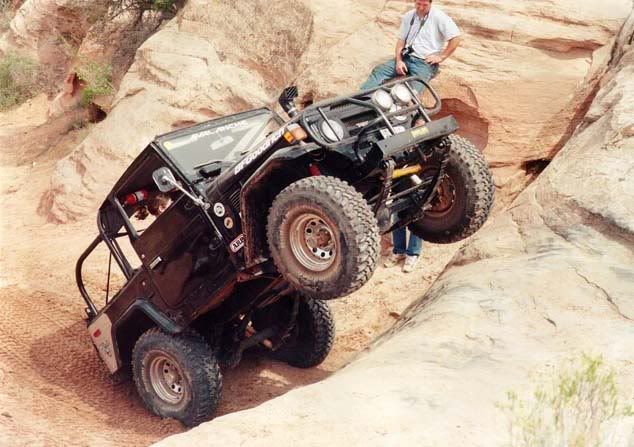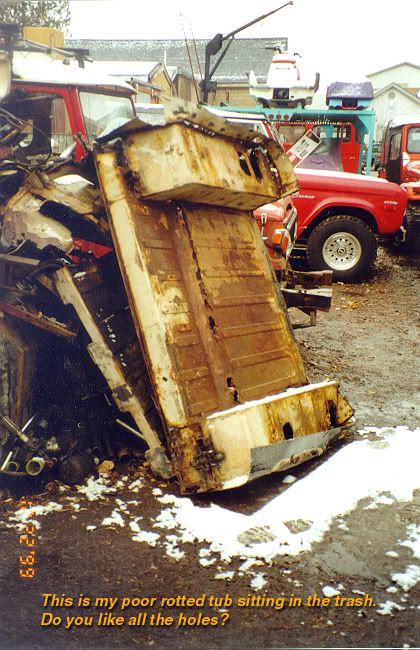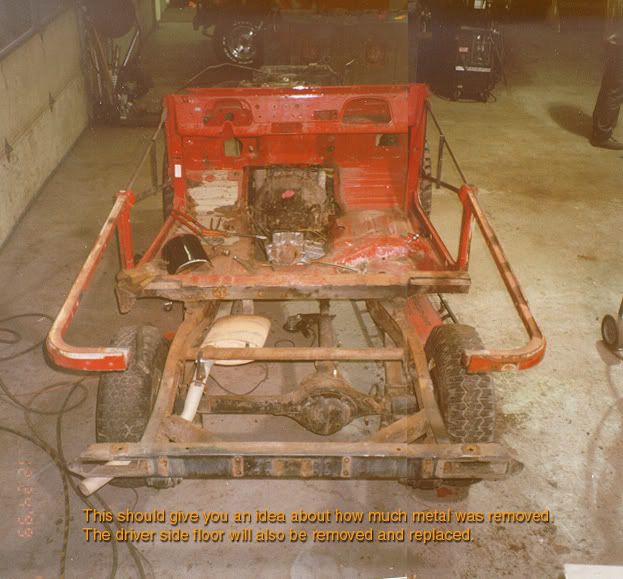Thanks for the info guys. Sorry to keep asking questions but is there any information y'all didn't mention that would be important for an older style FJ40? Unfortunately the 1975 owner flaked out, but I'm in talks with an owner of a 1968 that looks to be almost entirely in good shape except for some mismatch paint, a small amount of rust on the bottom of the doors, and some minor dents in the tub. The end goal is to keep it mostly stock and restored with probably a moderate lift and larger tires (entirely for looks, this is a project/drive around town/cruise fire roads kind of vehicle, I have my tacoma for actual expo stuff).
Here's some specifics off the top of my head for the 1968 (assuming it is stock).
It will have the early F motor. Later model ('75+) 2F conversions are common as well as lots of small black chevy conversions
It will have drum brakes on both axles. These are notoriously bad at stopping unless the system has been maintained extremely well. A later disc brake conversion should be on your list of mods for better driveability
Chances are good that the front axle will need to be serviced. Look for leaks and sludge build up around the knuckles.
Unless the steering has been upgraded to power steering (Saginaw being the most common) the steering center arm bracket could be loose. Check for play in the steering. Slop could come from steering shaft, rag joint, tie rod ends, or the center arm. The center arm is located on the inside of the driverside frame horn in the corner against the first frame cross member in front of the grill.
If the transmission is stock it will be a 3-speed. Could even be a "3-on-the-tree". Later 4-speed (H41-H42) trans conversions are popular as are the much saught after H55F trans that has a lower 1st gear and is a 5-speed. This transmission (H55F) will require a "split-case" transfer case from a 60 series.
Stock gear ratio is 4.11
Check all suspension bushings. If you're planning to install a lift soon, worn suspension components wont be a big deal.
Definitely look for an OEM carburetor as they are the best. If it has a Holley or Weber, plan to start looking for a replacement OEM carb. The Weber could be lived with, but the Holley should be thrown in the weeds.
The '68 will have the upper lift hatch on the hardtop, and double swingout doors on the back of the tub. Side windows on the hardtop will be one-piece glass.
Rust issues are expected unless its had some level of restoration already. Most common areas for rust are the rear sill (underneath the rear doors). The rear quarter panels along the seam where the inner wheel well meets the outer body skin. The top of the rear wheel wells behind the rollbar brackets (if it has a rollbar). Rocker panels can be rusty. Front floor boards are another common rust area. If there is a mat or carpet in the rear, pull it up and check for rust underneath.
It should have a split hood with a chrome "splitter" down the middle of the front 1/3 of the hood.
Windshield wipers will be at the top of the windshield with the wiper motor inside the cab along the top of the windshield.
Front bib(grill) should have two "bullet" style turn signals in the lower corners of the bib. Small round turn signals on the front fenders. Round rear brake lights at the outer ends of the rear frame crossmember.
Look for a leaky brake booster, brake master, clutch slave.
Check for worn belts, and signs of a leaky water pump or coolant leaks.
Selectro locking hubs were common on earlier FJ40's. Warn locking hubs were a dealer option and are also common. Aisin, locking hubs are the best of the 3.
.
Rezarf's suggestions are good.
It should start right up. Might still be worth your time and expense to have a compression test done on the motor to get a basic idea of engine condition.
Put it in low range and run it through the gears and make sure it doesn't pop out of gear on decel.
Look for poor wiring. Could mean you're in for some headaches chasing electrical gremlins.
.
1975 was the transition year where several things started to get updated.
2F motor replaced the F
Disc brakes on front axle (not on every '75) were standard in 1976
Wipers moved to bottom of the windshield
Larger square turn signals on the front fenders and rectangular 3-way brakelights/turnsignals/reverse lights on the rear bumper.
One piece hood.
"fat" doors
Ambulance style rear doors
Flip out vent window on the sides of the hard top.
4-speed trans
.
There are some other minor changes but those are the main ones. Rust areas are very similar throughout the entire model range.






